You Will Never Get Stuck Again!
This promise is immense; every day and every night, we are trying our best to fulfill it by helping others, leaving something worthwhile behind us, and living for a purpose that is "Enrich & Spread knowledge everywhere".
Join 15000+ Exceptional
Latest Python Wiki's
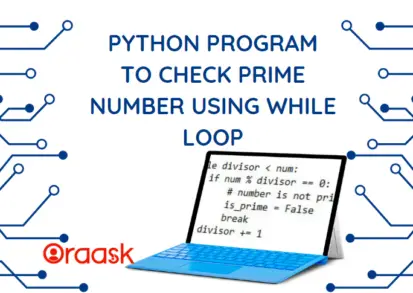
2 years ago
4 mins read
Python Program to Check Prime Number using While Loop
Python Program to Check Prime Number using While Loop
Prime numbers are an essential concept in mathematics and computer science. They are numbers that are only divisible by 1 and themselves. In ...
Oracle ACE Pro ♠ | Oracle Senior ERP Technical Consultant
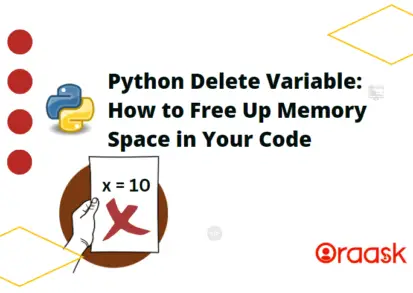
2 years ago
3 mins read
Python Delete Variable: How to Free Up Memory Space in Your Code
Python Delete Variable: How to Free Up Memory Space in Your Code
Introduction: Python is a popular programming language used in a variety of applications, from data analysis to web development. One ...
Oracle ACE Pro ♠ | Oracle Senior ERP Technical Consultant
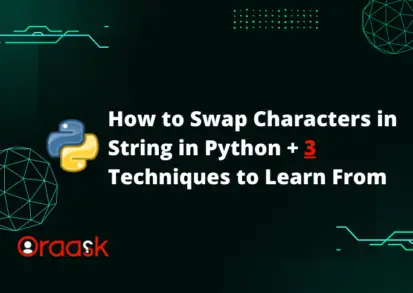
2 years ago
7 mins read
How to Swap Characters in String in Python – 3 Techniques
How to Swap Characters in String in Python – 3 Techniques
Swapping the string is one of the most commonly used operations by programmers. The string is a data type to store the text ...
Freelancer | Coder | Reader | Student | Learner
Latest Data Visualization Wiki's
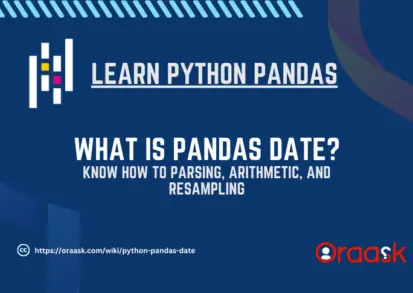
2 years ago
10 mins read
Python Pandas Date: Parsing, Arithmetic, and Resampling
Python Pandas Date: Parsing, Arithmetic, and Resampling
Pandas is one of the most popular libraries of Python. This data visualization library deals with the operations related to data. In data ...
Freelancer | Coder | Reader | Student | Learner

2 years ago
5 mins read
Exploring Python Pandas Options: Your Data Power Tool
Exploring Python Pandas Options: Your Data Power Tool
Pandas is a trendy Python library used for data analysis. One of the essential features of data analysis is the options system. This ...
Freelancer | Coder | Reader | Student | Learner

2 years ago
6 mins read
Python Pandas Join: Where Datasets Converge
Python Pandas Join: Where Datasets Converge
Introduction The topic of Python Pandas join is crucial for data manipulation and analysis. It is a process of ...
Freelancer | Coder | Reader | Student | Learner
Latest Java Wiki's
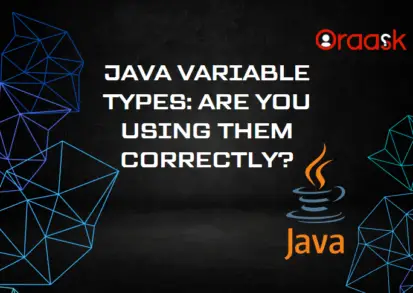
2 years ago
7 mins read
Java Variable Types: Are You Using Them Correctly?
Java Variable Types: Are You Using Them Correctly?
Introduction Programs manage data stored in memory. On the machine level, data can only be called by the numeric ...
MSc degree in Computer Engineering
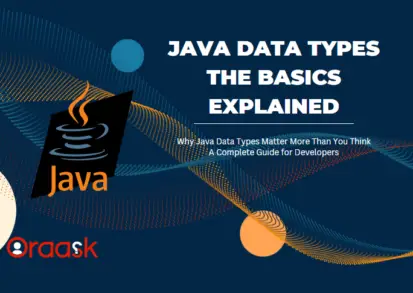
2 years ago
6 mins read
Java Data Types: The Basics Explained
Java Data Types: The Basics Explained
Introduction Each variable in Java must have a data type. There are several Java data types available. The type determines ...
MSc degree in Computer Engineering
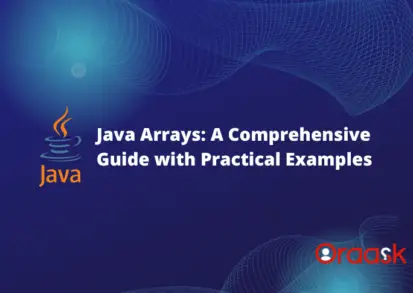
3 years ago
5 mins read
Java Arrays
Java Arrays
Introduction An array is a set of members. Each member can contain an object or primitive value. Arrays in Java ...
MSc degree in Computer Engineering
Latest Oracle Wiki's
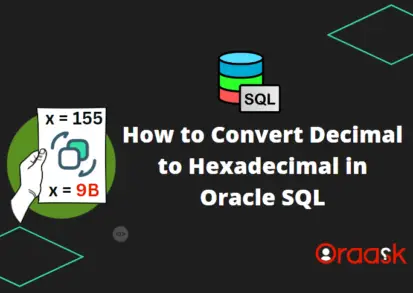
2 years ago
3 mins read
How to Convert Decimal to Hexadecimal in Oracle SQL
How to Convert Decimal to Hexadecimal in Oracle SQL
Introduction Are you struggling to convert decimal numbers to hexadecimal in Oracle SQL? Don't worry; you are not alone. ...
Oracle ACE Pro ♠ | Oracle Senior ERP Technical Consultant

2 years ago
9 mins read
How to Create Table with Foreign Key in Oracle
How to Create Table with Foreign Key in Oracle
Introduction If you are working with large amounts of data in an Oracle database, you may have come across ...
Oracle ACE Pro ♠ | Oracle Senior ERP Technical Consultant
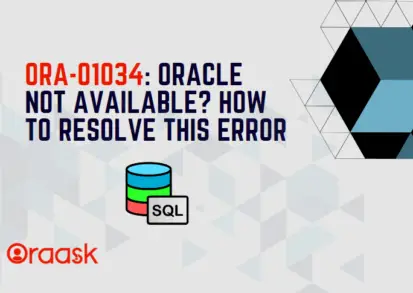
2 years ago
4 mins read
ORA-01034: Oracle Not Available – What is it, Causes, and How to Resolve
ORA-01034: Oracle Not Available – What is it, Causes, and How to Resolve
Oracle databases are widely used in the industry; sometimes, you may encounter errors when working with them. One such error is the ORA-01034 ...
Oracle ACE Pro ♠ | Oracle Senior ERP Technical Consultant
Latest JavaScript Wiki's

2 years ago
3 mins read
Easily Convert Decimal to Hex in JavaScript Today
Easily Convert Decimal to Hex in JavaScript Today
As a developer, knowing how to work with different numeral systems is essential. One such system is hexadecimal, which is commonly used in ...
Oracle ACE Pro ♠ | Oracle Senior ERP Technical Consultant
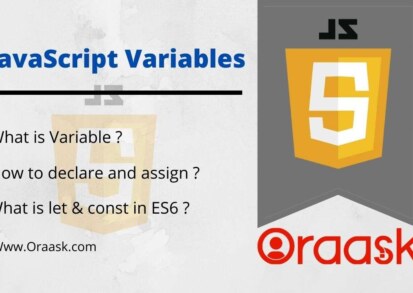
4 years ago
1 mins read
JavaScript Variables
JavaScript Variables
What are JavaScript variables? Variables are simply containers where we can store values. You can simply place the values in ...
isouravghosh
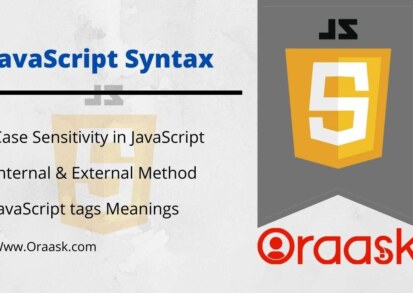
4 years ago
3 mins read
JavaScript Syntax
JavaScript Syntax
Introduction In HTML documents and webpages JavaScript can be included in two ways. One way is to include the JavaScript ...
isouravghosh
How to handle a unique constraint exceptions in PL/SQL code?
hello, you can use exception : [code] EXCEPTION WHEN DUP_VAL_ON_INDEX [/code]
hello,
you can use exception :
[code]
See lessEXCEPTION
WHEN DUP_VAL_ON_INDEX
[/code]
How to rollback oracle sequence value ?
There is no way to rollback the generated sequence. To restart the sequence at a different number, you must drop and re-create it. See http://docs.oracle.com/cd/B19306_01/server.102/b14200/statements_2011.htm. If you change the INCREMENT BY value before the first invocation of NEXTVAL, some sequenceRead more
There is no way to rollback the generated sequence.
To restart the sequence at a different number, you must drop and re-create it. See http://docs.oracle.com/cd/B19306_01/server.102/b14200/statements_2011.htm.
If you change the INCREMENT BY value before the first invocation of NEXTVAL, some sequence numbers will be skipped. Therefore, if you want to retain the original START WITH value, you must drop the sequence and re-create it with the original START WITH value and the new INCREMENT BY value.
See lessHow to convert milliseconds to mins, seconds in java ?
you can use java.util.concurrent.TimeUnit class Read more [code] String.format("%d mins, %d secs", TimeUnit.MILLISECONDS.toMinutes(milli), TimeUnit.MILLISECONDS.toSeconds(milli) - TimeUnit.MINUTES.toSeconds(TimeUnit.MILLISECONDS.toMinutes(milli)) ); [/code] If TimeUnit or toMinutes are unsupported (Read more
you can use java.util.concurrent.TimeUnit class Read more
[code]
String.format(“%d mins, %d secs”,
TimeUnit.MILLISECONDS.toMinutes(milli),
TimeUnit.MILLISECONDS.toSeconds(milli) –
TimeUnit.MINUTES.toSeconds(TimeUnit.MILLISECONDS.toMinutes(milli))
);
[/code]
If TimeUnit or toMinutes are unsupported (such as on Android before API version 9), use the following equations:
[code]
See lessint seconds = (int) (milliseconds / 1000) % 60 ;
int minutes = (int) ((milliseconds / (1000*60)) % 60);
int hours = (int) ((milliseconds / (1000*60*60)) % 24);
[/code]
How to avoid != null statements in java ?
If you use (or planning to use) JetBrains IntelliJ IDEA, a Java IDE, you can use some particular annotations developed by them. Basically, you've got @Nullable and @NotNull. You can use in method and parameters, like this: [code] @NotNull public static String helloWorld() { return "Hello World"; } [Read more
If you use (or planning to use) JetBrains IntelliJ IDEA, a Java IDE, you can use some particular annotations developed by them.
Basically, you’ve got @Nullable and @NotNull.
You can use in method and parameters, like this:
[code]
@NotNull public static String helloWorld() {
return “Hello World”;
}
[/code]
or
[code]
@Nullable public static String helloWorld() {
return “Hello World”;
}
[/code]
The second example won’t compile (in IntelliJ IDEA).
When you use the first helloWorld() function in another piece of code:
[code]
public static void main(String[] args)
{
String result = helloWorld();
if(result != null) {
System.out.println(result);
}
}
[/code]
Now the IntelliJ IDEA compiler will tell you that the check is useless, since the helloWorld() function won’t return null, ever.
Using parameter
[code]
void someMethod(@NotNull someParameter) { }
[/code]
if you write something like:
[code]
someMethod(null);
[/code]
This won’t compile.
Last example using @Nullable
[code]
@Nullable iWantToDestroyEverything() { return null; }
[/code]
Doing this
[code]
iWantToDestroyEverything().something();
[/code]
And you can be sure that this won’t happen. 🙂
It’s a nice way to let the compiler check something more than it usually does and to enforce your contracts to be stronger. Unfortunately, it’s not supported by all the compilers.
In IntelliJ IDEA 10.5 and on, they added support for any other @Nullable @NotNull implementations.
See blog post More flexible and configurable @Nullable/@NotNull annotations.
See lessHow to open a PDF output directly when click of a SubmitButton in OAF ?
Hi Waqas, it's applicable by using Standard API [code]fnd_webfile.get_url (file_type => fnd_webfile.request_out, -- for output file. Use request_log to view log file ID => l_request_id, gwyuid => l_gwyuid, two_task => l_two_task, expire_time => 500 -- minutes, security!. );[/code] notRead more
Hi Waqas,
it’s applicable by using Standard API
[code]fnd_webfile.get_url
(file_type => fnd_webfile.request_out,
— for output file. Use request_log to view log file
ID => l_request_id,
gwyuid => l_gwyuid,
two_task => l_two_task,
expire_time => 500 — minutes, security!.
);[/code]
note : there are two profile options this API must take as following
l_gwyuid : Gateway User ID
[code]oadbtransactionimpl.getAppsContext().getEnvStore().getEnv(“GWYUID”)[/code]
l_two_task: Two Task(TWO_TASK)
[code]oadbtransactionimpl.getAppsContext().getEnvStore().getEnv(“TWO_TASK”)[/code]
you can register out parameter of calling this API to String variable then use
[code]pageContext.sendRedirect[/code]
Hope this helpful 🙂
See lessHow to to prevent other event handlers from executing after a certain event is fired ?
return false from within a jQuery event handler is effectively the same as calling both e.preventDefault and e.stopPropagation on the passed jQuery.Event object.e.preventDefault() will prevent the default event from occuring, e.stopPropagation() will prevent the event from bubbling up and return falRead more
return false from within a jQuery event handler is effectively the same as calling both e.preventDefault and e.stopPropagation on the passed jQuery.Event object.
e.preventDefault() will prevent the default event from occuring, e.stopPropagation() will prevent the event from bubbling up and return false will do both. Note that this behaviour differs from normal (non-jQuery) event handlers, in which, notably, return false does not stop the event from bubbling up
Source: John Resig
See lessHow to Put session parameter on link oracle OAF ?
Hello Aashish, There are three common means of passing parameters between pages : Request Transaction Session and you can use VO attributes for passing values Values stored in VO attributes are available in all pages within the transaction with same Root AM. URL Parameters : Encryption and EncodingRead more
Hello Aashish,
There are three common means of passing parameters between pages :
Request
Transaction
Session
and you can use VO attributes for passing values
Values stored in VO attributes are available in all pages within the transaction with same Root AM.
URL Parameters : Encryption and Encoding
When we are passing parameters in URL, following need to be considered:
[code]
See less{@Attr} – encodes. Changes Prince Kapoor to Prince%20Kapoor
{!Attr} – encrypts. Encrypts sensitive information.
{$Attr} – plain token substitution (no encoding or encryption)
{@@RETURN_TO_MENU} – Used for E-Business Suite Personal Home Page. Same as OAWebBeanConstants.RETURN_TO_MENU_URL.
{@@RETURN_TO_PORTAL} – Return the user to a launching Portal page. Same as OAWebBeanConstants.RETURN_TO_PORTAL_URL.
[/code]
what is the difference between “INNER JOIN” and “OUTER JOIN”?
Hi there,i found some answer you will understand it so easy.Assuming you're joining on columns with no duplicates, which is a very common case:An inner join of A and B gives the result of A intersect B, i.e. the inner part of a Venn diagram intersection.An outer join of A and B gives the results ofRead more
Hi there,
i found some answer you will understand it so easy.
Assuming you’re joining on columns with no duplicates, which is a very common case:
An inner join of A and B gives the result of A intersect B, i.e. the inner part of a Venn diagram intersection.
An outer join of A and B gives the results of A union B, i.e. the outer parts of a Venn diagram union.
Examples
Suppose you have two tables, with a single column each, and data as follows:
A B
– –
1 3
2 4
3 5
4 6
Note that (1,2) are unique to A, (3,4) are common, and (5,6) are unique to B.
Inner join
An inner join using either of the equivalent queries gives the intersection of the two tables, i.e. the two rows they have in common.
[code]SELECT *
FROM a INNER JOIN b ON a.a = b.b;[/code]
[code]SELECT a.*, b.*
FROM a, b
WHERE a.a = b.b;[/code]
a | b
–+–
3 | 3
4 | 4
Left outer join
A left outer join will give all rows in A, plus any common rows in B.
[code]select * from a LEFT OUTER JOIN b on a.a = b.b;
select a.*,b.* from a,b where a.a = b.b(+);[/code]
a | b
–+—–
1 | null
2 | null
3 | 3
4 | 4
Right outer join
A right outer join will give all rows in B, plus any common rows in A.
[code]select * from a RIGHT OUTER JOIN b on a.a = b.b;
select a.*,b.* from a,b where a.a(+) = b.b;[/code]
a | b
—–+—-
3 | 3
4 | 4
null | 5
null | 6
Full outer join
A full outer join will give you the union of A and B, i.e. all the rows in A and all the rows in B. If something in A doesn’t have a corresponding datum in B, then the B portion is null, and vice versa.
[code]select * from a FULL OUTER JOIN b on a.a = b.b;[/code]
a | b
See less—–+—–
1 | null
2 | null
3 | 3
4 | 4
null | 6
null | 5
How to query a CLOB column in Oracle SQL ?
Hi Albert, You can use DBMS_LOB.substr like this for example: DBMS_LOB.substr(column, 3000) but don't forget that substring of a CLOB column has size/buffer restrictions sometimes you would need to set the BUFFER to a larger size. For example while using SQL Plus use the SET BUFFER 10000 to set it tRead more
Hi Albert,
You can use DBMS_LOB.substr like this for example:
but don’t forget that substring of a CLOB column has size/buffer restrictions sometimes you would need to set the BUFFER to a larger size.
For example while using SQL Plus use the SET BUFFER 10000 to set it to 10000 as the default is 4000
and you can refer to Oracle Substr Function Article for more information about the substr function
See lessError ORA-00933: SQL command not properly ended – update
hello, here you can find the cause and action to correct your statement : Cause: The SQL statement ends with an inappropriate clause. For example, an ORDER BY clause may have been included in a CREATE VIEW or INSERT statement. ORDER BY cannot be used to create an ordered view or to insert in a certaRead more
hello,
here you can find the cause and action to correct your statement :
Cause: The SQL statement ends with an inappropriate clause. For example, an ORDER BY clause may have been included in a CREATE VIEW or INSERT statement. ORDER BY cannot be used to create an ordered view or to insert in a certain order.
Action: Correct the syntax by removing the inappropriate clauses. It may be possible to duplicate the removed clause with another SQL statement. For example, to order the rows of a view, do so when querying the view and not when creating it. This error can also occur in SQL*Forms applications if a continuation line is indented. Check for indented lines and delete these spaces.
you can use :
[code]
UPDATE employees e
SET e.last_name = ‘test’
WHERE e.department_id = (SELECT d.department_id
FROM departments d
WHERE d.department_id = e.department_id);
[/code]
See less